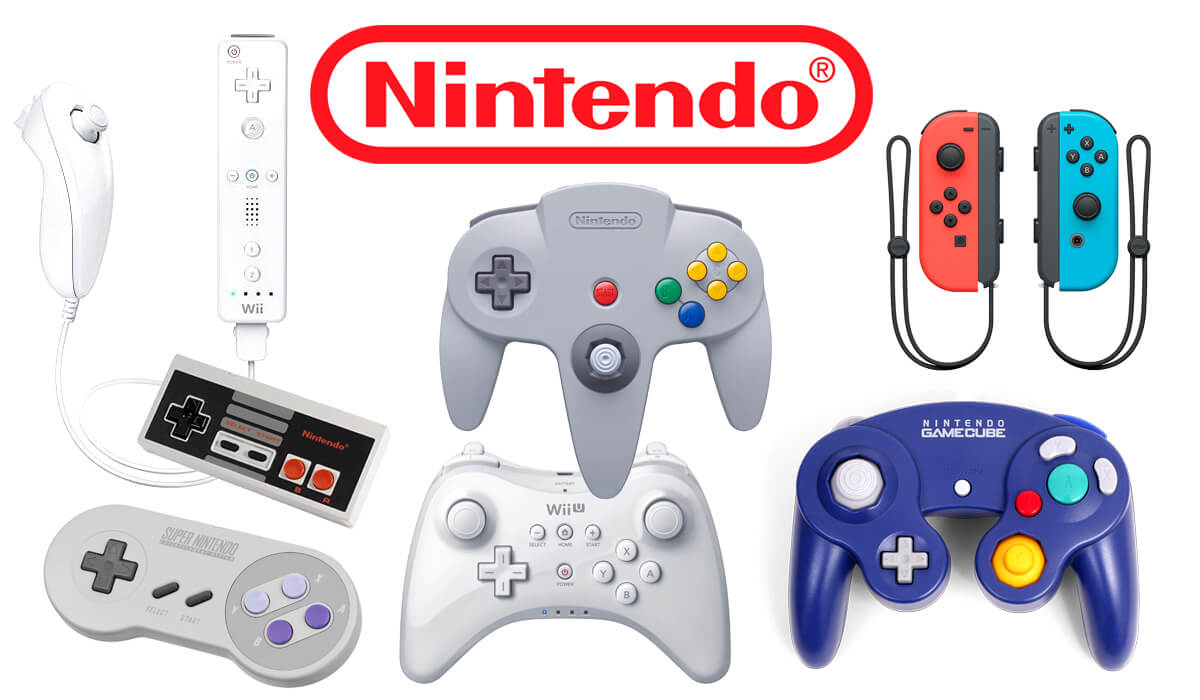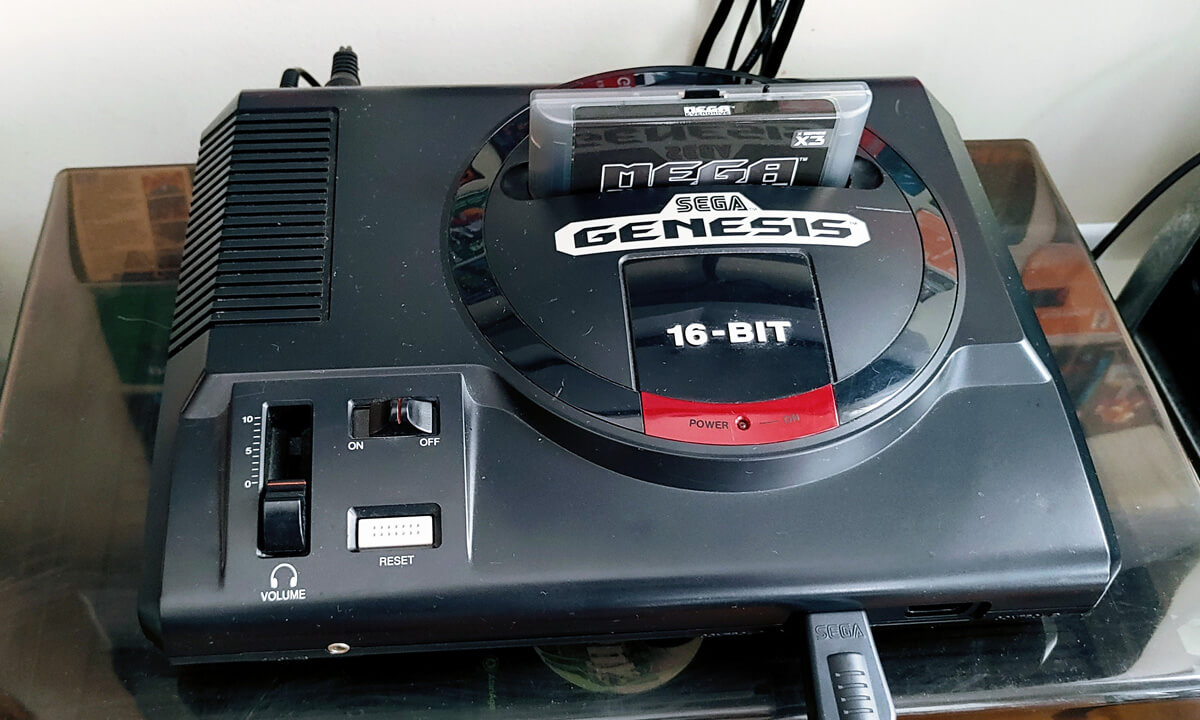Nintendo began developing video games in the 1970s during the height of arcade gaming. When gaming companies like Atari began developing video game systems for home use, Nintendo also began working on its own gaming consoles.
The Nintendo Entertainment System home gaming and Super Mario Bros game franchise changed the gaming world. As retro gaming as gained popularity at video game conventions, let’s look at the history of each Nintendo gaming home and portable console and when it was released.
Nintendo Color TV Game (1977-1983)
The Color TV-Game is the first video game system ever made by Nintendo and was a commercial hit. Nintendo sold one million units each of Color TV-Game 6 and Color TV-Game 15. The Color TV-Game consoles were produced jointly by Nintendo Research & Development 2 (R&D2) and Mitsubishi Electronics.Nintendo Watch and Games Series (1980-1991)
The Game & Watch brand is a series of handheld electronic games developed, manufactured, released, and marketed by Nintendo from 1980 to 1991. There were 60 different Game & Watch games produced for sale, one that was only available as a contest prize. The prize game was given to winners of Nintendo’s F-1 Grand Prix tournament, a yellow-cased version of Super Mario Bros.Nintendo Entertainment System (NES) (1983-1995)
The Nintendo Entertainment System (NES) is an 8-bit third-generation home video game console produced by Nintendo. It was first released in Japan in 1983 as the Family Computer (FC), commonly referred to as Famicom. It was redesigned to become the NES, which was released in American test markets on October 18, 1985.The NES is one of the best-selling consoles of its time and helped revitalize the US gaming industry following the video game crash of 1983. The NES features a number of groundbreaking games, such as the 1985 platform game Super Mario Bros. and the 1986 action-adventure games The Legend of Zelda and Metroid, which became long-running franchises.
Nintendo Game Boy (1989-2003)
The Game Boy is an 8-bit fourth generation handheld game console developed and manufactured by Nintendo. It is Nintendo’s second handheld game console and combines features from both the Game & Watch handheld and NES gaming system.The Game Boy received mixed reviews and was deemed technologically inferior to its fourth-generation competitors like Sega’s Game Gear, Atari’s Lynx, and NEC’s TurboExpress. It received criticism for lack of backlight, graphics, bulky design and price, but it also received praise for its battery life, library of games and durability in its construction. Nevertheless, it quickly outsold the competition.
Super Nintendo Entertainment System (SNES) (1990-2005)
The Super Nintendo Entertainment System, commonly shortened to Super Nintendo, Super NES or SNES is a 16-bit home video game console developed by Nintendo that was released in 1990 in Japan and 1991 in North America. The console introduced advanced graphics and sound capabilities compared with other systems at the time. It was designed to accommodate the ongoing development of a variety of enhancement chips integrated into game cartridges to be competitive into the next generation.Nintendo Virtual Boy (1995-1996)
The Virtual Boy is a 32-bit tabletop portable video game console developed and manufactured by Nintendo. it was marketed as the first console capable of displaying stereoscopic 3D graphics. The player uses the console like a head-mounted display, placing the head against the eyepiece to see a red monochrome display. The games use a parallax effect to create the illusion of depth. Sales failed to meet targets, and Nintendo ceased distribution and game development in 1996, having released only 22 games for the system.Nintendo 64 (1996-2002)
The Nintendo 64 (N64) is a home video game console developed by Nintendo. The successor to the Super Nintendo Entertainment System, it was the last major home console to use cartridges as its primary storage format until the Nintendo Switch in 2017.The final design was named after its 64-bit CPU, which aided in the console’s 3D capabilities. Its design was mostly complete by mid-1995 and launch was delayed until 1996 for the completion of the launch games Super Mario 64, Pilotwings 64, and Saikyō Habu Shōgi (exclusive to Japan). Some games require the Expansion Pak accessory to increase system RAM from 4MB to 8MB, for improved graphics and functionality. The console mainly supports saved game storage either onboard cartridges or on the Controller Pak accessory.
Nintendo Game Boy Color (1998-2003)
The Game Boy Color is an 8-bit handheld game console, manufactured by Nintendo. It is the successor to the Game Boy. The handheld features a color screen rather than monochrome, but it is not backlit.Nintendo GameCube (2001-2007)
The Nintendo GameCube, more commonly known as the GameCube, is a home video game console developed and released by Nintendo. It is the successor to the Nintendo 64. In the sixth generation of video game consoles, the GameCube competed with Sony’s PlayStation 2 and Microsoft’s Xbox.Development was enabled by the 1997 formation of computer graphics company ArtX, of former SGI employees who had created the Nintendo 64, and which was later acquired by ATI to produce the GameCube’s GPU. The console supports limited online gaming for a few games via a GameCube broadband or modem adapter and can connect to a Game Boy Advance with a link cable for exclusive in-game features using the handheld as a second screen and controller.
Nintendo Game Boy Advance (2001-2004)
The Game Boy Advance is a 32-bit handheld game console developed, manufactured and marketed by Nintendo as the successor to the Game Boy Color. The Game Boy Advance was designed in a landscape form factor, putting the buttons to the sides of the device instead of below the screen. Backward compatibility for Game Boy and Game Boy Color games is provided by a custom 4.194/8.388 MHz hybrid Z80 & 8080-based coprocessor, while a link port at the top of the unit allows it to be connected to other devices using a Game Link cable or GameCube link cable.Nintendo Wii (2006–2017)
The Wii is a home video game console developed and marketed by Nintendo. It is Nintendo’s fifth major home game console, and is a seventh-generation console alongside Microsoft’s Xbox 360 and Sony’s PlayStation 3.The primary controller for the Wii is the Wii Remote, a wireless controller with both motion sensing and traditional controls which can be used as a pointing device towards the television screen or for gesture recognition. The Wii was Nintendo’s first home console to directly support Internet connectivity, supporting both online games and for digital distribution of games and media applications through the Wii Shop Channel. Initial Wii models included full backward compatibility support for the GameCube.
Nintendo DS (2004-2011)
The Nintendo DS is a handheld game console produced by Nintendo, released globally across 2004 and 2005. The DS, an initialism for “Developers’ System” or “Dual Screen”, introduced distinctive new features to handheld games: two LCD screens working in tandem, the bottom one being a touchscreen, a built-in microphone and support for wireless connectivity.Nintendo 3DS (2011-2020)
The Nintendo 3DS is a handheld game console produced by Nintendo as the successor to the Nintendo DS. The system features backward compatibility with Nintendo DS video games. The handheld’s most prominent feature is its ability to display stereoscopic 3D effects without the use of 3D glasses or additional accessories, and it offers new features such as the StreetPass and SpotPass tag modes, powered by Nintendo Network; augmented reality using its 3D cameras; and Virtual Console, which allows owners to download and play games originally released on older video game systems.Nintendo Wii U (2012-2017)
The Wii U is a home video game console developed by Nintendo as the successor to the Wii. It’s the first eighth-generation video game console and competed with Microsoft’s Xbox One and Sony’s PlayStation 4.The Wii U is the first Nintendo console to support HD graphics. The system’s primary controller is the Wii U GamePad, which features an embedded touchscreen, directional buttons, analog sticks, and action buttons. The screen can be used either as a supplement to the main display or in supported games to play the game directly on the GamePad. The Wii U Pro Controller can be used in its place as a more traditional alternative. The Wii U is backward compatible with all Wii software and accessories. Games can support any combination of the GamePad, Wii Remote, Nunchuk, Balance Board, or Nintendo’s Classic Controller or Wii U Pro Controller. Online functionality centers around the Nintendo Network platform and Miiverse, an integrated social networking service which allowed users to share content in game-specific communities.
Nintendo Switch (2017-present)
The Nintendo Switch is a video game console developed by Nintendo. The console itself is a tablet that can either be docked for home console use or used as a portable device, making it a hybrid console. Its wireless Joy-Con controllers, with standard buttons and directional analog sticks for user input, motion sensing, and tactile feedback, can attach to both sides of the console to support handheld-style play. They can also connect to a grip accessory to provide a traditional home console gamepad form, or be used individually in the hand like the Wii Remote and Nunchuk.The Nintendo Switch’s software supports online gaming through Internet connectivity, as well as local wireless ad hoc connectivity with other consoles. Nintendo Switch games and software are available on both physical flash-based ROM cartridges and digital distribution via Nintendo eShop.
A handheld-focused revision of the system, called the Nintendo Switch Lite, was released on September 20, 2019. A revised higher-end version of the original system, featuring an OLED screen, was released on October 8, 2021.




















